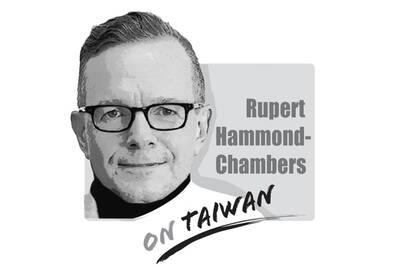UN General Assembly Resolution 2758 has nothing to do with Taiwan, and it is downright despicable of China to attempt to obscure the issue by linking the resolution to its false claim that Taiwan is a part of China.
Adopted by the UN General Assembly on Oct. 25, 1971, Resolution 2758 recognized the People’s Republic of China (PRC) as the sole legal government of China, replacing the Republic of China (ROC).
The exact wording is: “[The UN decides] to expel forthwith the representatives of Chiang Kai-shek [蔣介石] from the place which they unlawfully occupy at the UN and in all the organizations related to it.”
By unseating “the second China,” then represented by Chiang’s regime, what the resolution accomplished was resolving the question of the right of who represented China. Nowhere in the resolution is Taiwan mentioned; it did not address the issue of Taiwan’s representation, let alone explicitly or implicitly recognize the PRC’s territorial claim to Taiwan.
Thus the WHO’s wrongful interpretation of the resolution in favor of China over Taiwan, as evidenced by its mention of the resolution and the “one China” principle in its invitation to Taiwan to attend the World Health Assembly (WHA) this month, is ultimately shameful.
The invitation to “Dr Chiang” — Minister of Health and Welfare Chiang Been-huang (蔣丙煌) — from WHO Director-General Margaret Chan (陳馮富珍), includes the phrase “recalling the UN General Assembly Resolution 2758 (XXVI) and WHA Resolution 25.1 [which expelled the ROC from the WHO in 1972] and in line with the ‘one China’ principle as reflected therein.”
The incident comes across as yet another brazenly sneaky attempt by Beijing to distort the resolution as it tries to justify its territorial claims over Taiwan.
This is not the first time China, via the hands of others, has employed such a dirty trick in its attempts to tie Taiwan’s hands and deny Taiwan an international presence.
UN Secretary-General Ban Ki-moon in July 2007 rejected Taiwan’s UN membership application by repeating Beijing’s claim that “Taiwan is an inalienable part of China’s territory.” He cited UN Resolution 2758 and added: “In accordance with that resolution, the United Nations considers Taiwan for all purposes to be an integral part of the People’s Republic of China.”
The US objected to Ban’s distorted reasoning and Washington “urged the UN Secretariat to review its policy on the status of Taiwan and to avoid taking sides in a sensitive matter on which UN members have agreed to disagree for over 35 years.”
“If the UN Secretariat insists on describing Taiwan as a part of the PRC, or on using nomenclature for Taiwan that implies such status, the United States will be obliged to disassociate itself on a national basis from such a position. It is crystal clear of US policy on Taiwan,” it added.
In 2011, then-US secretary of health and human services Kathleen Sebelius spoke up for Taiwan, saying that no UN agency had the right to unilaterally determine Taiwan’s status.
Indeed, no single international organization, the UN included, can unilaterally decide Taiwan’s standing, nor should China be given the ultimate say on the international stage to unilaterally decide Taiwan’s participation in global organizations.
However, it can be expected that China will continue trying to trick the international community into believing that Resolution 2758 binds Taiwan to it.
The incoming Democratic Progressive Party administration must heed the impact of Beijing’s distorted reasoning and take care not to give the international community any idea that it is acceptable to have Resolution 2758 made applicable to contemporary Taiwan.
The gutting of Voice of America (VOA) and Radio Free Asia (RFA) by US President Donald Trump’s administration poses a serious threat to the global voice of freedom, particularly for those living under authoritarian regimes such as China. The US — hailed as the model of liberal democracy — has the moral responsibility to uphold the values it champions. In undermining these institutions, the US risks diminishing its “soft power,” a pivotal pillar of its global influence. VOA Tibetan and RFA Tibetan played an enormous role in promoting the strong image of the US in and outside Tibet. On VOA Tibetan,
Sung Chien-liang (宋建樑), the leader of the Chinese Nationalist Party’s (KMT) efforts to recall Democratic Progressive Party (DPP) Legislator Lee Kun-cheng (李坤城), caused a national outrage and drew diplomatic condemnation on Tuesday after he arrived at the New Taipei City District Prosecutors’ Office dressed in a Nazi uniform. Sung performed a Nazi salute and carried a copy of Adolf Hitler’s Mein Kampf as he arrived to be questioned over allegations of signature forgery in the recall petition. The KMT’s response to the incident has shown a striking lack of contrition and decency. Rather than apologizing and distancing itself from Sung’s actions,

US President Trump weighed into the state of America’s semiconductor manufacturing when he declared, “They [Taiwan] stole it from us. They took it from us, and I don’t blame them. I give them credit.” At a prior White House event President Trump hosted TSMC chairman C.C. Wei (魏哲家), head of the world’s largest and most advanced chip manufacturer, to announce a commitment to invest US$100 billion in America. The president then shifted his previously critical rhetoric on Taiwan and put off tariffs on its chips. Now we learn that the Trump Administration is conducting a “trade investigation” on semiconductors which
By now, most of Taiwan has heard Taipei Mayor Chiang Wan-an’s (蔣萬安) threats to initiate a vote of no confidence against the Cabinet. His rationale is that the Democratic Progressive Party (DPP)-led government’s investigation into alleged signature forgery in the Chinese Nationalist Party’s (KMT) recall campaign constitutes “political persecution.” I sincerely hope he goes through with it. The opposition currently holds a majority in the Legislative Yuan, so the initiation of a no-confidence motion and its passage should be entirely within reach. If Chiang truly believes that the government is overreaching, abusing its power and targeting political opponents — then